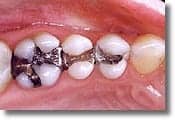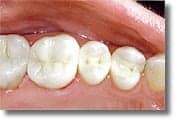Dental fillings have been around for a long time. In the 1840s, dentists discovered if they dug out the decayed and weakened structure in a tooth and filled it with a paste made of mercury and silver, it would harden and serve the patient for years. That simple discovery tranformed dentistry and saved many teeth that would otherwise have been pulled. The fillings have been called silver fillings, downplaying the presence of mercury in them. A more accurate term would be amalgam fillings. They have been useful and have served us well for over 150 years. Of course, back then, they didn’t understand about the toxicity of mercury. They just knew it helped patients keep their teeth.
While the American Dental Association has said that amalgam fillings are safe, many patients are uncomfortable with having mercury in their teeth. Fortunately, there have been new advances in recent years that avoid the use of mercury in fillings. Two advances in the late twentieth century changed dentistry again. First, a white filling material was developed made out of durable composite material. Around the same time, advances in bonding enabled the material to be bonded directly to the tooth, thereby strengthening the tooth.
These fillings are more difficult to place than amalgam fillings. In order for dentists to properly place them requires special training, but the benefit to patients is substantial.

Amalgam Fillings

Mercury free Composite Fillings
Advantages of Mercury-free Fillings
- Much less tooth structure has to be removed with white composite fillings than with amalgam fillings.
- Composite fillings bond directly to the tooth, strengthening it. Amalgam fillings weaken the tooth.
- They seal adjacent, vulnerable parts of the tooth from recurring decay.
- Since they are non-metallic, they don’t conduct the hot and cold from food and beverages the way amalgam fillings do.
- Composite fillings look much more like your natural tooth structure.
